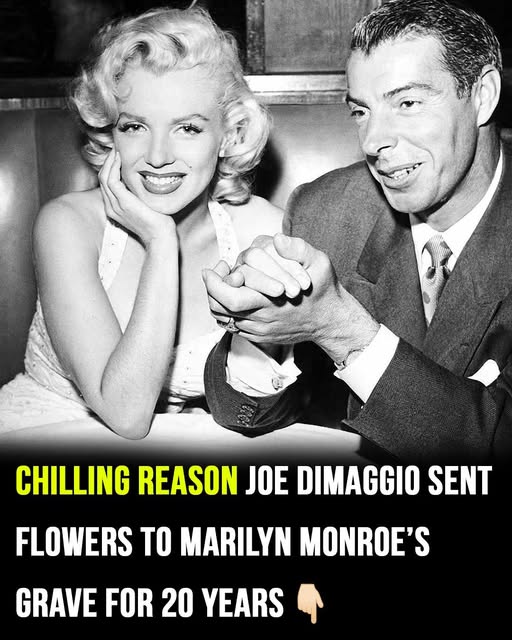The Most Corrupt Presidents In US History, Ranked
The President of the United States is an esteemed position respected worldwide, but not all US presidents have been created equal. Numerous Commanders-in-Chief in American history have broken rules, defied orders, rejected norms, and openly violated laws.
As a result, some Presidents of the United States fall into a category one might call “corrupt.” They created controversies, were surrounded by scandal and, at times, found themselves mired in legal proceedings. The presidents most associated with corruption all had their own circumstances with which to contend and their actions unfolded in very different ways.
Even the most beloved of American presidents are not without their critics. Abraham Lincoln is at the top of the list of best US presidents, while George Washington isn’t close behind. They’re not tainted by corruption, however, and certainly don’t have the same association with impropriety and illegality as the presidents listed here.
So, within the presidents accused of – and proven to be guilty of – corruption, it’s up to you to decide which ones were the worst.
Years: 1972-1974
Context: In June 1972, a group of men broke into the headquarters of the Democratic National Committee at the Watergate Hotel. They planted listening devices as part of the effort to get Richard Nixon re-elected as President of the United States.
Nixon was, in fact, re-elected, but his administration immediately tried to cover-up the break-in as well as conceal any evidence of their involvement. The investigation into the burglary led to charges against Nixon aides G. Gordon Liddy and James W. McCord Jr., as well as the resignations of staffers H.R. Haldeman and John Ehrlichman as well as Attorney General Richard Kleindienst.
White House lawyer John Dean was fired and he later told investigators the President was involved. Nixon and the White House continued to try to avoid culpability, even deleting recordings of conversations in the Oval Office to do so.
By the end of 1973, Nixon went on the defensive, declaring, “I am not a crook,” but transcripts of White House recordings led to three articles of impeachment being drawn up against Nixon in July 1974.
Outcome: Nixon resigned the presidency before he officially faced impeachment. His resignation on August 9, 1974, was the first in the history of the presidency. At the time, Nixon said:
I have never been a quitter. To leave office before my term is completed is abhorrent to every instinct in my body. But as President, I must put the interest of America first.
It was unclear what would happen to Nixon in terms of charges and legal action, but his former Vice President Gerald Ford used his presidential powers after
Years: the 1920s
Context: Numerous scandals occurred related to President Warren G. Harding and his administration, the best-known of which is the Teapot Dome Scandal. From the beginning of his term in office, however, Harding appointed friends and associates to federal positions regardless of their qualifications. He also hid mistresses and fathered a child out of wedlock.
With respect to Teapot Dome, Harding’s Secretary of the Interior Albert Fall leased oil reserves in Teapot Dome, WY, and in other locations in California, to major oil companies without taking bids for the leases. Fall did so in exchange for bribes from those companies’ owners.
Fall’s actions were investigated by Congress after the media exposed the deals. Senator John B. Kendrick was also approached by representatives from other oil companies about the illegal deals. While Harding was dead by the time the investigation was complete – and when Fall became the first Cabinet member to go to prison for actions taken while in office – his legacy was forever tarnished by the scandal.
That wasn’t where controversy ended in the Harding administration, however. Harding’s Attorney General Harry M. Daugherty, while never convicted of any offenses, was a questionable choice due to his reputation for backroom political deals. He was implicated in Teapot Dome but was rumored to have been connected to a bribery scandal involving bootleggers.
Additionally, Harding established the Veterans’ Bureau and his first head of the agency, Charles R. Forbes, was later convicted of “conspiracy to defraud the government in the building of hospitals for Veterans.”
Outcome: Harding passed away while in California on a tour of the American West on August 2, 1923. At that point, the scandals in his administration were generally unknown, but when they were revealed after his death, his legacy was forever tarnished.
Years: 2019, 2021, 2025
Context: President Donald Trump was impeached twice during his first term in office. In 2019, he was impeached for abuse of power and obstruction of justice related to election interference. The first article read:
Using the powers of his high office, President Trump solicited the interference of a foreign government, Ukraine, in the 2020 United States Presidential election.
The second article explained that Trump “directed the unprecedented, categorical, and indiscriminate defiance of subpoenas” related to the investigation into election interference.
Trump was acquitted in the first trial but was became the first US president to be impeached twice in 2021. Charges against him revolved around the protests and riots that took place in Washington, DC, on January 6, 2021. Trump was charged with inciting an insurrection related to his claims that he had not lost the presidential election the previous November.
Trump won a second term as US president in 2024. In the interim, he’d been convicted of 34 felonies for falsified business records.
Trump’s second term began with multiple executive orders as well as the use of an unofficial agency called the Department of Government Efficiency. He also deported immigrants accused of gang activity and defied an order by the US Supreme Court prohibiting the removal of a man named Kilmar Armando Abrego Garcia in the process.
When Qatar offered Trump a gift of a luxury airplane in May 2025, legal scholars and other observers noted that it violated the Foreign Emoluments Clause in the US Constitution:
No Person holding any Office of Profit or Trust under them, shall, without the Consent of the Congress, accept of any present, Emolument, Office, or Title, of any kind whatever, from any King, Prince, or foreign State.
Outcome: The first impeachment trial of Trump began in January 2020 and ended on February 5, 2020. He was acquitted “by 52 votes to 48 on one count, and 53 votes to 47 on the other.”
Only one article of impeachment was passed by the US House of Representatives on January 14, 2021, but when the vote took place less than a month later, the vote was 57 to 43, not guilty. The two-thirds majority was not reached.
Year: 1868
Context: For the first time in the history of the United States, a presidential impeachment was initiated in February 1868. President Andrew Johnson was charged with “high crimes and misdemeanors” for removing Edward Stanton from his post as Secretary of War.
Stanton’s firing was a violation of the Tenure of Office Act that had been passed by Congress in March 1867. It stated that anyone who had been appointed to an office with the Senate’s approval could only be removed with their approval. The Senate didn’t concur with Stanton’s removal, so Johnson was breaking the law.
There was more going on than just one appointment. Resentment between government factions in the aftermath of the American Civil War permeated the government. Johnson’s pardons of numerous former Confederate officials and military personnel were extremely controversial. Regardless, the House of Representatives adopted 11 articles of impeachment and voted on them on February 24, 1868. Once impeached by the House, Johnson’s charges were sent to the US Senate.
Outcome: Johnson’s impeachment trial in the US Senate began in March 1868 and lasted for nearly three months. Chief Justice of the US Supreme Court Salmon B. Chase oversaw the proceedings as arguments for and against Johnson’s removal took place.
The first vote – on just article eleven, the one that most directly charged Johnson with disregarding the Constitution and “unlawfully devising and contriving” to avoid the Constitution and other laws – took place on May 16. Johnson was acquitted by a 35 to 19 vote, just one shy of the two-thirds majority needed to convict. The rest of the articles were voted on on May 26, and Johnson was again acquitted by the same vote count.
Years: 1829-1837
Context: Andrew Jackson cried foul after he lost the 1824 election, but took office after a decided victory in 1828. It wasn’t long after he did that the wives of his Cabinet members and Vice President John C. Calhoun (the so-called Petticoats) deemed Margaret “Peggy” Eaton, wife of Secretary of War John Eaton, too subpar in reputation and morality to be in their company.
The Petticoat Affair carried over to the husbands, specifically exacerbating the tensions in the Cabinet and between Jackson and Calhoun. Jackson’s decision-making was also criticized, having appointed Easton who was necessarily linked to his purportedly unseemly wife.
The fight over the charter renewal of the Second Bank of the United States in 1832 led to its closure under Jackson’s watch. Jackson didn’t trust banks and thought the centralized Bank had too much power, so he was victorious in the end, but the waning years of the Bank (the charter ended in 1836) contributed to the Panic of 1837.
One of most controversial moves by Jackson was his reaction to the US Supreme Court’s decision in Worcester v. Georgia (1832). The Court ruled that Georgia laws seizing Indigenous lands violated federal legislation. Jackson was said to have responded:


